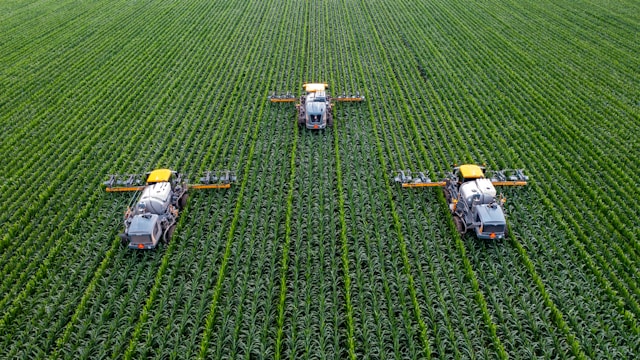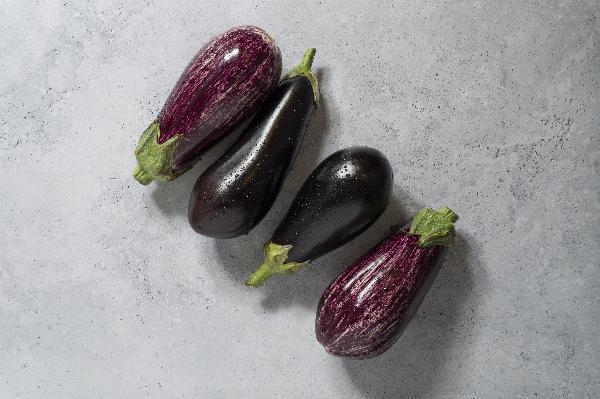VNR Brinjal 212: A High-Yielding Eggplant Variety

In the realm of agricultural innovation, few developments have garnered as much attention and excitement as the introduction of VNR Brinjal 212. This remarkable variety of eggplant, also known as aubergine, has revolutionized brinjal cultivation with its exceptional cluster-bearing characteristics and prolific yield potential. As farmers and researchers alike marvel at its performance, VNR Brinjal 212 stands as a testament to the power of scientific breeding and its potential to address food security challenges.
The Genesis of VNR Brinjal 212
VNR Brinjal 212 is the result of years of dedicated research and development by VNR Seeds, a leading Indian seed company known for its innovative agricultural solutions. The variety was developed through conventional breeding techniques, focusing on enhancing desirable traits such as disease resistance, fruit quality, and most notably, cluster-bearing ability.
The breeding process involved careful selection of parent plants with superior genetic characteristics, followed by multiple generations of crossing and evaluation. The result is a hybrid variety that combines the best traits of its lineage, creating a plant that is not only high-yielding but also adaptable to various growing conditions.
Cluster Bearing: A Game-Changing Trait
The most striking feature of VNR Brinjal 212 is its exceptional cluster-bearing habit. Unlike traditional brinjal varieties that typically produce one or two fruits per node, VNR Brinjal 212 can bear up to 5-7 fruits in a single cluster. This unique characteristic significantly increases the plant's yield potential, making it a favorite among farmers looking to maximize their production.
The cluster-bearing trait offers several advantages:
Increased yield per plant: With multiple fruits developing simultaneously at each node, the overall yield per plant is substantially higher than conventional varieties.
Efficient use of space: Cluster-bearing allows for more efficient use of vertical space, making VNR Brinjal 212 suitable for both traditional field cultivation and intensive farming systems.
Reduced labor costs: The concentration of fruits in clusters can make harvesting more efficient, potentially reducing labor costs for farmers.
Extended harvest period: The plant continues to produce new clusters over an extended period, allowing for multiple harvests from a single crop cycle.
Yield Potential and Performance
The yield potential of VNR Brinjal 212 has been a subject of great interest among agricultural researchers and farmers. Field trials and farmer experiences have consistently reported impressive results, with yields often surpassing those of traditional varieties by a significant margin.
To illustrate the yield potential of VNR Brinjal 212, let's consider the following comparative table:
| Variety | Average Yield (tons/hectare) | Fruits per Cluster | Crop Duration (days) |
| VNR Brinjal 212 | 45-50 | 5-7 | 150-160 |
| Traditional Var. A | 25-30 | 1-2 | 140-150 |
| Traditional Var. B | 30-35 | 2-3 | 145-155 |
As the table demonstrates, VNR Brinjal 212 outperforms traditional varieties in terms of yield, with an average production of 45-50 tons per hectare under optimal conditions. This represents a yield increase of up to 100% compared to some conventional varieties.
Fruit Characteristics and Market Appeal
Beyond its impressive yield, VNR Brinjal 212 boasts fruit characteristics that appeal to both farmers and consumers. The fruits are medium-sized, typically weighing between 80-100 grams, with a glossy purple-black color that is highly attractive in the market. Their uniform shape and consistent size make them ideal for both fresh market sales and processing.
The flesh of VNR Brinjal 212 fruits is known for its tender texture and mild, pleasant flavor. These qualities have made it a favorite among consumers, leading to strong market demand and potentially higher returns for farmers.
Agronomic Advantages
VNR Brinjal 212 offers several agronomic advantages that contribute to its popularity among farmers:
Disease resistance: The variety exhibits good resistance to common brinjal diseases such as bacterial wilt and Fusarium wilt, reducing the need for chemical interventions.
Early maturity: With a crop duration of 150-160 days from transplanting to final harvest, VNR Brinjal 212 allows for quicker returns on investment compared to some longer-duration varieties.
Adaptability: The plant has shown good performance across various soil types and climatic conditions, making it suitable for cultivation in different regions.
Stress tolerance: VNR Brinjal 212 demonstrates improved tolerance to environmental stresses such as heat and drought, enhancing its reliability as a crop choice.
Challenges and Considerations
While VNR Brinjal 212 offers numerous advantages, it's important to note that realizing its full potential requires proper management and care. Farmers need to ensure adequate nutrition and irrigation to support the high fruit load. The cluster-bearing habit may also necessitate additional support structures to prevent branch breakage under the weight of multiple fruits.
Additionally, as with any hybrid variety, farmers need to purchase new seeds each season to maintain the genetic integrity and performance of the crop. This can represent an increased input cost compared to open-pollinated varieties, though it is often offset by the higher yield potential.
Impact on Brinjal Cultivation and Food Security
The introduction of VNR Brinjal 212 has had a significant impact on brinjal cultivation in regions where it has been adopted. Its high yield potential and attractive fruit characteristics have encouraged many farmers to switch from traditional varieties, leading to increased overall production.
This boost in productivity has positive implications for food security, particularly in regions where brinjal is a staple vegetable. The increased availability of nutritious, high-quality brinjals can contribute to improved nutrition and dietary diversity in local communities.
Furthermore, the success of VNR Brinjal 212 serves as an inspiration for further research and development in vegetable breeding. It demonstrates the potential for conventional breeding techniques to create varieties that address current agricultural challenges and meet the evolving needs of farmers and consumers.
Conclusion
VNR Brinjal 212 stands as a shining example of how innovative plant breeding can transform crop production. Its cluster-bearing wonder, combined with high yield potential and desirable fruit characteristics, has set a new standard in brinjal cultivation. As farmers continue to embrace this prolific variety, it not only promises enhanced productivity and profitability but also contributes to the broader goals of sustainable agriculture and food security. The success story of VNR Brinjal 212 serves as a testament to the ongoing revolution in agricultural science and its potential to shape the future of food production.
Note: IndiBlogHub features both user-submitted and editorial content. We do not verify third-party contributions. Read our Disclaimer and Privacy Policyfor details.





